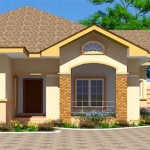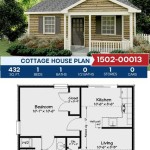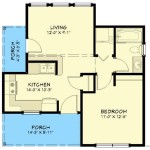House Plans and Elevations in DWG Format: Essential Aspects
Architectural design plays a crucial role in the construction of any building, and house plans and elevations are vital components of this process. They provide a detailed blueprint for the structure, ensuring its functionality, aesthetics, and safety. In this article, we will explore the essential aspects of house plans and elevations, particularly in DWG format, which is widely used in the architectural industry.
What are House Plans and Elevations?
House plans are scaled drawings that show the layout of a house, including the arrangement of rooms, windows, doors, and other structural elements. They provide a comprehensive overview of the house's interior design and space planning.
Elevations, on the other hand, are vertical drawings that depict the exterior walls of a house from different sides (front, back, left, and right). They show the height, shape, and architectural features of the house's exterior, including windows, doors, roofing, and any decorative elements.
Benefits of DWG Format
DWG (Drawing Exchange Format) is a file format developed by Autodesk, which is widely used in architecture, engineering, and construction. DWG format offers several benefits for house plans and elevations:
- Compatibility: DWG files are compatible with various software applications, allowing for easy sharing and collaboration among professionals.
- Accuracy: DWG format supports high-precision drawing, ensuring accurate representation of house plans and elevations. li>Customizability: DWG files can be easily edited and modified, making it convenient to make changes or updates to the design.
Essential Aspects of House Plans and Elevations in DWG
When creating house plans and elevations in DWG format, there are several essential aspects to consider:
Conclusion
House plans and elevations in DWG format are essential tools in the architectural design and construction process. By understanding the key aspects of these drawings, professionals can create accurate and detailed blueprints that form the basis for a well-designed and functional house.

Floor Plan Of The House With Elevation Details In Dwg File Which Provide Detail Front Side Ele Plans Drawing Simple

House Plan With Section And Elevation In Dwg File Cadbull

Plan And Elevation House Detail Dwg File Plans Front

Simple House Elevation Section And Floor Plan Cad Drawing Details Dwg File Cadbull

Architecture House Ground Floor And First Plan Autocad Drawing Dwg File

20 X 25 House Plan And Elevation Design Autocad File Cadbull

2d House Floor Plan With Elevation Design Dwg File Simple Plans

2 Y Architectural House Floor Plan 18x9m Dwg File N Design

2d Floor Plan In Autocad With Dimensions 38 X 48 Dwg And File Free First House Plans Designs

Type Of Houses Dwg Models Free








